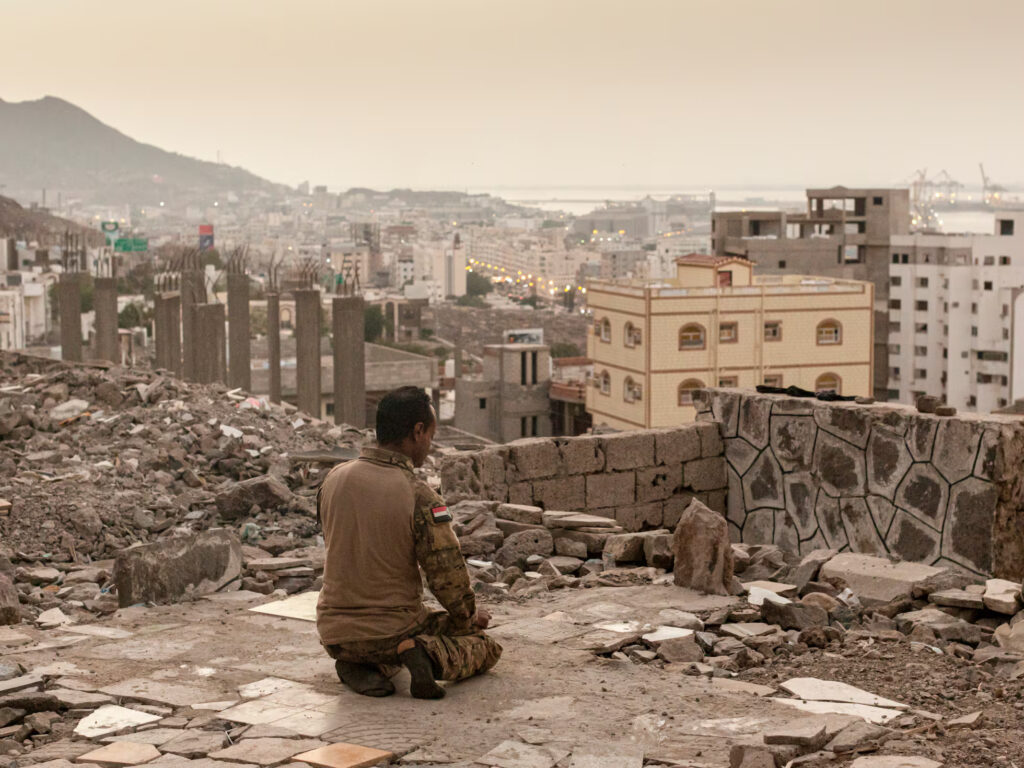Yemen’s New Frontlines: Houthi Defiance, US Strikes, and a Fragmenting State

Image: El Pais
Yemen stands at the edge of collapse. Once a local rebellion, the Houthis have grown into a powerful regional actor. In recent months, they have launched sustained missile and drone attacks on Red Sea shipping routes, citing solidarity with Palestinians in Gaza. The US has responded with a sustained campaign of airstrikes, targeting Houthi positions along the coast and in urban centers such as Sanaa.
While Washington insists these strikes are defensive, intended to secure the Red Sea for global trade, the civilian cost has been high. More than 200 lives have been lost in recent weeks. Hospitals, housing, and infrastructure have suffered extensive damage in Houthi-controlled areas. In a country where nearly 20 million people already depend on humanitarian aid, the escalation risks tipping Yemen into full-blown collapse.
A Broken State
Yemen’s conflict has created a fractured landscape. The Houthis dominate the north and capital. The Presidential Leadership Council, backed by Saudi Arabia, governs from the south. Meanwhile, the UAE-supported Southern Transitional Council (STC) holds pockets of territory and strategic coastal areas. Additional layers of complexity are added by al-Qaeda in the Arabian Peninsula (AQAP) and other armed factions that continue to operate in the south.
Despite a 2022 ceasefire, tensions never fully receded. Instead, they have metastasized into shifting alliances, temporary truces, and proxy battles. The US re-engagement in Yemen has further upset the fragile balance.
The Battle for Marib
Militarisation is accelerating. The oil-rich city of Marib is now the focal point of renewed hostilities. A Houthi advance here would grant the group enormous economic leverage and deepen the division of southern Yemen. Simultaneously, reports indicate that rival militias are preparing a ground assault on Sanaa. Should the capital come under siege, the consequences could include mass civilian displacement and the resurgence of extremist groups in the resulting vacuum.
Why This Matters
Yemen’s crisis is not isolated. It impacts global shipping, regional power dynamics, and long-term economic stability across the Middle East. The 66 percent decline in traffic through the Suez Canal has already triggered shifts in trade routes, supply chains, and insurance premiums.
Strategically, Houthi control of Red Sea shipping lanes would hand Iran-aligned forces leverage over one of the world’s most vital maritime corridors. It would also undermine international efforts to reduce tensions in the Gulf and derail US-Iran negotiations.
Militancy as Strategy
The Houthis’ rise reflects a broader pattern across the region. Armed movements are transitioning into political forces, capitalising on power vacuums and global indecision. Just as in Syria, Yemen may serve as a blueprint for how insurgent groups consolidate territorial gains into diplomatic influence. This sets a dangerous precedent and could further destabilise fragile states across the Middle East and North Africa.
A High-Risk Operating Environment
Despite the instability, interest in Yemen’s future has not waned. Discussions around infrastructure repair, port development, and energy exploration are underway in the Gulf. But the risks remain acute. Any attempt to re-engage in Yemen’s market must be preceded by robust risk analysis, political mapping, and contingency planning.
ICE24 supports clients with operational foresight and real-time intelligence in high-risk environments. Our Geopolitical Forecasting and Risk & Threat Assessments offer the clarity you need to stay one step ahead. With ICEWEEKLY and ICEMONTHLY, we deliver verified insights on the security, political, and economic dynamics that matter to your business.
Contact us to explore how you can protect your interests and anticipate developments in volatile regions:
[email protected]
[email protected]
